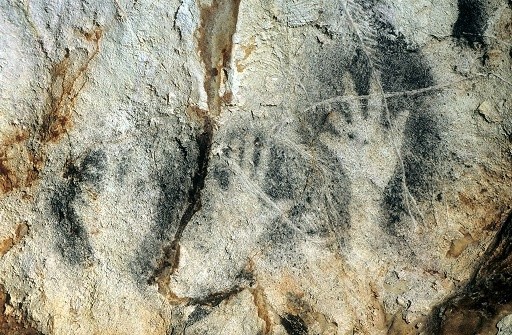
In a study presented at the recent European Society for Human Evolution meeting, archeologists proposed a new interpretation for a set of Paleolithic cave paintings depicting hand prints with missing digits, saying that it is evidence of a prehistoric finger dismemberment ritual done for religious reasons.
The paper analyzed over 200 painted handprints missing one or several fingers across several caves across France and Spain, with the prehistoric artwork dated around 25,000 years ago. Prior theories pointed toward medical and artistic reasoning, until now.
Mark Collard, the research's lead archeologist and professor at Simon Fraser University, told The Guardian: "There is compelling evidence that these people may have had their fingers amputated deliberately in rituals intended to elicit help from supernatural entities."
The professor added that this behavior was not unique to the time or the place, saying that a "few societies" have been documented practicing finger dismemberment across history.
Collard specifically spoke of one particular tribe from the New Guinea Highlands in Indonesia, dubbed the Dani people, whose female members would cut off "one or more fingers" as a sign of respect over a loved one's passing.
"We believe that Europeans were doing the same sort of thing in paleolithic times, though the precise belief systems involved may have been different. This is a practice that was not necessarily routine but has occurred at various times through history," he added.
Read Also : France's Musée Rolin Aids the Return of Nazi-Looted Dutch Painting to Goudstikker Heir, Its Original Owner
Pushback From the Scientific Community Led to More Evidence
Collard and his team's theory was published in a prior thesis a few years ago, but it was criticized by his contemporaries for the sole reason that missing digits would prove catastrophic for prehistoric people's ability to live.
The criticism prompted him and his research colleague Brea McCauley, a PhD student, to start collecting more data. To do so, they examined both hand-pressed prints and stenciled paintings found within the cave sites of Maltravieso and Fuente del Trucho in Spain, and Gargas and Cosque in France.
Determined to add new additions to their pile of evidence, the research team searched elsewhere across the globe and found more cave sites containing cave art of dismembered hands, specifically, five sites in South Asia, one in South-East Asia, nine in North America, four in Africa, and three in Australia.
In light of these newfound pieces of proof, Collard and his colleagues are convinced that the ritual was "invented independently multiple times," with some "hunter-gatherer societies" even engaging with some iteration of the amputation ritual.
For Collard, this means that tribes at the Gargas site, along with other groups in caves elsewhere, possibly "engaged in the practice." The professor also likened the particular practice to other rituals like face-piercing and fire-walking, saying that the ritual might have been done to get the tribe's members to be more "cooperative."